Frostweed, Verbesina virginica, won the most votes in 2021’s Unofficial Pollinator Plant of the Year poll. This year was Frostweed’s second attempt at claiming the title and so it did, besting its competitor Gayfeather, Liatris mucronata, 79 to 64.
The poll, which launched in mid January and closed at the end of the month, drew 143 votes from citizen gardeners.
“Frostweed is deserving of this title because it is such an important plant that is surprisingly absent in the nursery trade,” said Lee Marlowe, sustainable landscape ecologist at the San Antonio River Authority (SARA) and 2021 president of San Antonio’s Native Plant Society chapter.
Marlowe voted for Frostweed, she said, because it not only provides valuable nectar for monarchs during their fall migration, but because it also regularly attracts a community of pollinators including dancing flies, metallic bees and a variety of other butterflies.
“Here’s hoping more people can get this plant into their garden in 2021 where they will surely come to love it,” she said.
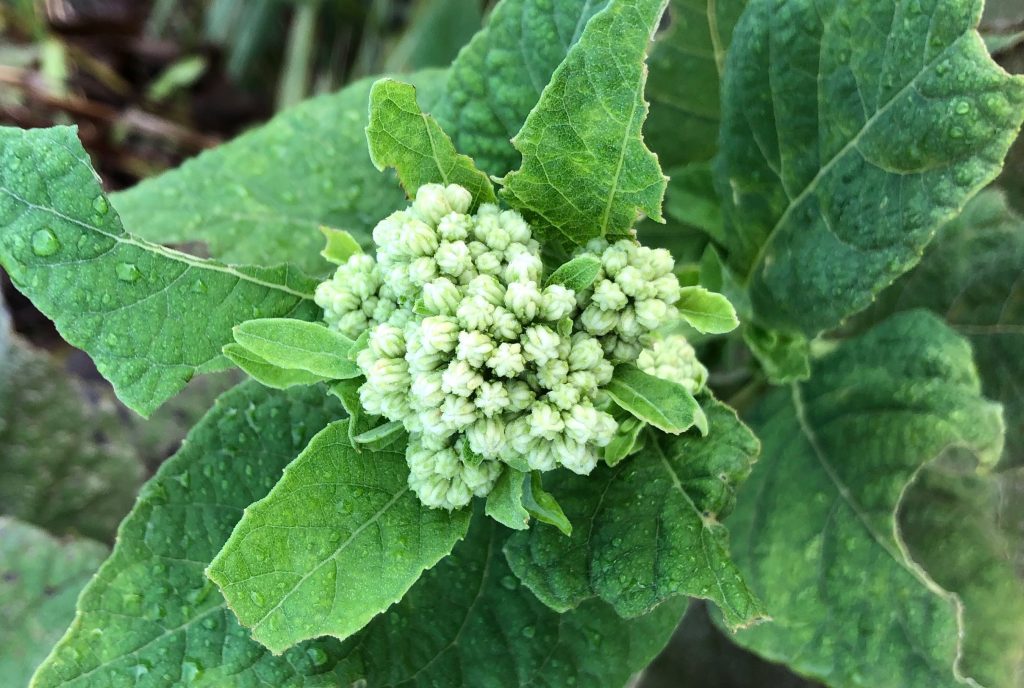
Frostweed ready to bust its blooms, Llano River. Photo by Monika Maeckle
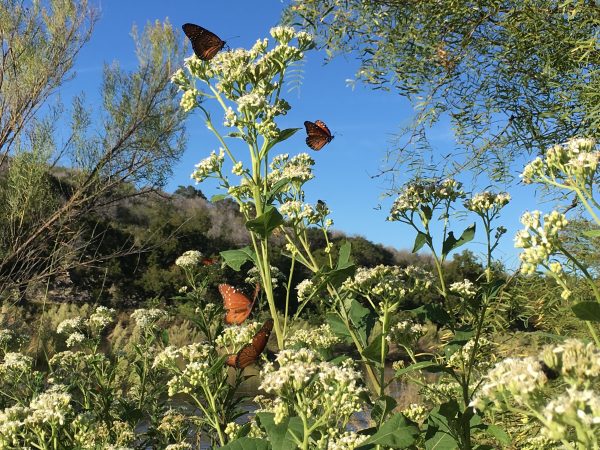
Pollinators can’t resist Frostweed. Here, Queens on Frostweed, Llano River. Photo by Monika Maeckle
Frostweed puts out lush white umbels of composite flowers starting in late summer through November. The flower clusters prove irresistible to all pollinators, since they can sit in place and nectar on multiple blossoms at once. Since it blooms during peak monarch migration season in Texas, Frostweed plays an important role in fueling monarch butterflies during their autumn passage through the Texas Funnel.
The plant can reach 6 – 8 feet in height and can be gregarious. It grows in shade or with partial sun, and spreads through seeds and rhizomes. Its favored soil types include sandy, loam and clay and it does well when protected from brutal late afternoon sun. A typical setting in the wild would be under the canopy of a tall pecan tree along a watershed, where the plant can enjoy morning sun.
One of Frostweed’s most appealing traits is a phenomenon known as crystallofollia. The plant is one of few that pull this unique trick of nature, which has resulted in its common name. When the first freeze hits, Frostweed splits its stems and its phloem oozes from the stalk, creating lovely and unusual ice crystals. The odd habit is stunning to view, but you must go early in the day, because the ice sculptures melt quickly as the sun warms them up.
The Unofficial Pollinator Plant of the Year initiative, started in 2019 by the Texas Butterfly Ranch, came about to raise awareness of the unsung plant heroes of the pollinator garden. Many worthy, native plants are commercially unavailable, often only accessible during seasonal pop-up plant sales.
Commercial and retail nurseries cite “lack of demand” as the reason for these plants’ absence in their stores. Our Unofficial Pollinator Plant of the Year citizen gardener effort aims to create demand that will result in more native plants at gardening centers, local nurseries and big box stores.
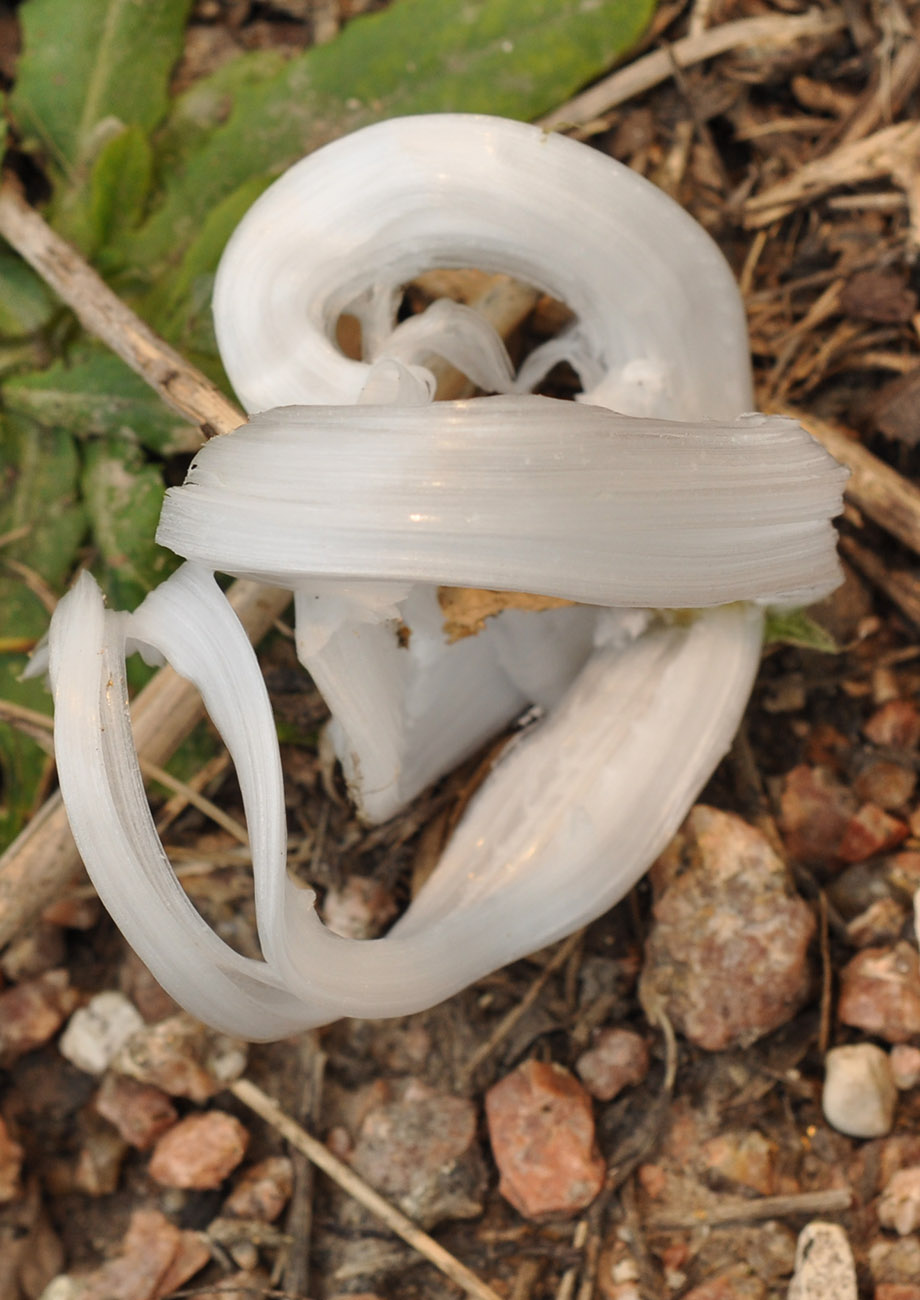
Upon the first freeze, Frostweed makes interesting ice crystals in a process called crystallofollia. —Photo courtesy Native American Seed
When shopping for plants for your pollinator garden, choose Frostweed. If you don’t find it, help raise awareness by asking local plant suppliers to stock Verbesina virginica. Help us raise awareness of this under-appreciated native and request it every time you visit your favorite local nursery, big box store, or gardening center.
Ask the sales clerk or plant buyer: “Do you have Frostweed? I’ve been hearing so much about it. Any chance you might stock it?”
Seeds are available online, but not as common as we’d like. That said, the plant is easy to propagate from seed, cuttings or by division. Note that if grown from seed, Frostweed will likely not bloom until the second year. Once established, though, you’ll be sharing plants with friends and neighbors.
A quick phone survey to San Antonio area nurseries, showed three out of four contacted had no Frostweed in stock, with few plans to stock it in the future.
Steven Fanick of Fanick’s Nursery said “it’s possible” the plant might be purchased in the future if demand called for it. A spokesperson for Millberger’s Nursery said the company had no plans to stock Frostweed.
Brandon Kirby, co-owner of Rainbow Gardens, labeled Frostweed “one of those plants that nobody grows,” adding, “It’s completely nonexistent.” He said he would consider stocking it in the future.
That’s a cue to request Frostweed each time you visit a nursery.
Our successful 300for300 initiative demonstrated that when gardeners take action, we can make a difference.
In 2018, we set out to create 300 pollinator gardens for San Antonio’s 300th birthday. By December 31, 2018, we had pledges for 325 gardens, exceeding our goal by almost 10 percent. In 2019, we pushed for 500 gardens by 2020 and hit the mark by year’s end with 510 gardens pledge. Today we have 574 pollinator habitats pledged.
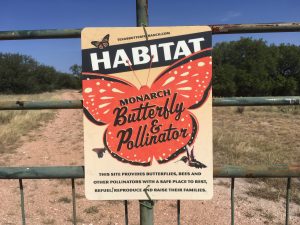
Pollinators welcome at the Texas Butterfly Ranch! Signs available in our shop. Photo by Monika Maeckle
Check out the map of our pollinator habitats pledged here.
Want to join our initiative? Pledge to plant a pollinator garden by registering.
One local native landscaping boutique will have Frostweed inventory in stock, however. Drake White of the Nectar Bar has “plenty” of Frostweed in seedling stage, and 300 one-gallon plants will be available the first week in March.
“It’s wonderful to see people taking notice of other pollinator plants that play such an important roll in our habitats,” said White, owner and operator of the San Antonio native plant landscaping company.
“With Frostweed one of the main nectar sources for monarchs during their migration, it’s a true gem,” she said. “It’s also a host plant for Bordered patch butterflies, so multiple pollinators are helped when you plant this one.”
Frostweed joins Gregg’s mistflower and Cowpen Daisy as our third Unofficial Pollinator Plant of the Year. For more info and growing tips, check out our Resources page.
TOP PHOTO: Bumblebee on Frostweed
Related posts:
- Cowpen daisy: Unofficial pollinator plant of the year 2019
- 2020 Unofficial pollinator plant of the year: Gregg’s mistflower
- How to plan a successful butterfly garden
- Mostly native butterfly garden outperforms lawn every time
- A year in the life of an urban butterfly garden
- Downtown River walk plot converts to pollinator garden, creature haven
- Converting your Lawn to a Butterfly Garden
- San Antonio becomes first National Wildlife Federation Monarch Champion city
- Tropical Milkweed: To Plant it or Not is No Simple Question
Like what you’re reading? Don’t miss a single post from the Texas Butterfly Ranch. Sign up for email delivery, like us on Facebook, or follow us on Twitter, @monikam.

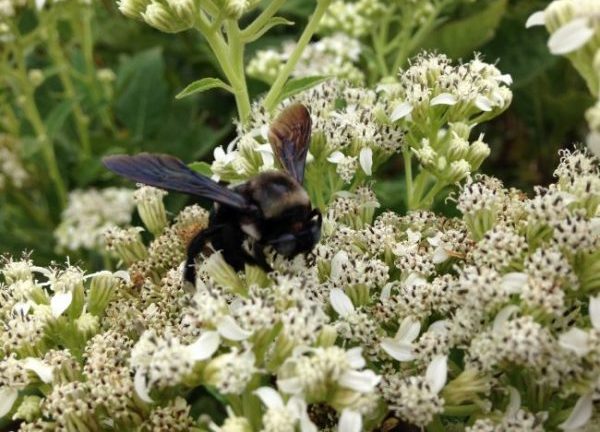
Thanks for this information,. Not sure if frostweed would do well here but I’ve discovered the #1 food of choice for our monarchs is common red clover, we have it all over and a large field of it and this past fall we’re blessed with a huge swarm of monarchs for two days assuming from Canada and they covered the field, it was awesome.
Rose
Will Frostweed grow in South Idaho, USDA Zone 7a. I’ll get it unless it’s entirely a Southern climate plant.
Hi Terry,
Unfortunately, no.
According to the Ladybird Johnson distribution includes:
USA: AL , AR , DC , FL , GA , IA , IL , IN , KS , KY , LA , MD , MO , MS , NC , OH , OK , PA , SC , TN , TX , VA , WV
Native Distribution: Pennsylvania west to central Texas, south to Florida
Native Habitat: Open, dryish woodlands and streambanks Center, Frostweed dDistribution
Good luck!
MM
I your article I truly
your article I truly  Monarch Butterflies
Monarch Butterflies  I’m a Artist
I’m a Artist
I’ve done a painting and would love to dedicate it to them at your Sanctuary how can I contact you or Monika Maeckle for information?
When I was young (1950’s-1960’s) Monarch Butterflies were everywhere. I’m not sure when it became so evident that they just weren’t around like they used to be. For years I used to kill milkweed on my property until about 7 years ago I realized I needed it so since then I have cultivated it and encouraged its growth. Last summer my wife and I each spotted 1 Monarch. I guess there is hope?
I think so!
Monika, would it grow in southern FL (Key West). But in large container? We don’t have good growing soil here, but need to attract more butterflies. Have raised Monarchs for 6 years, but when released they go elsewhere for pollen. Need help. (ideas). Trish
Hi Trish,
Apparently it does grow in Florida. According to the Ladybird Johnson Wildflower Center, distribution includes:
USA: AL , AR , DC , FL , GA , IA , IL , IN , KS , KY , LA , MD , MO , MS , NC , OH , OK , PA , SC , TN , TX , VA , WV
Native Distribution: Pennsylvania west to central Texas, south to Florida
Native Habitat: Open, dryish woodlands and streambanks Center, Frostweed dDistribution
Good luck!
MM
I am in Southern California, but have visited Florida many times. I think you can grow lantana there. My butterflies love that. They also love the bougainvillea and plumbago. Anything with lots of small flowers so they can sip the nectar. The milkweed flowers also have the nectar. Though I do notice that the butterflies are territorial about those!
I do like your container idea, as you can then use great potting soil. (Just not the stuff with chemicals added.) I know people who have built or purchased raised beds so they can have beautiful gardens. I generally just plant in the ground, amending the existing soil. I also make sure there is plenty of organic material (such as bark or dried leaves) that feed the plants as it the material breaks down.
I get ideas for my own garden by walking. You can walk around your own neighborhood. Or, drive to a neighborhood you think is pretty and go for a walk. Or walk at a park. It’s great exercise and you will get some lovely ideas! If you think something is pretty, so will the butterflies!
Kris , You should try growing California natives for local butterflies , like toyon, and salvia, Plus many more plants, check out Theodore Payne Native plant nursery Caterpillars need local native plants, California has a wonderful diverse plant selection. Learn more online.
I bought Frostweed to plant in my front yard. I love it. Great Fall pollinator plant and those ice sculptures look like spun white cotton candy!
I grow frostweed and try to give it away but there is very little knowledge of it.
Mine is in complete shade, I usually get many seedlings from it. And I collect the seed.